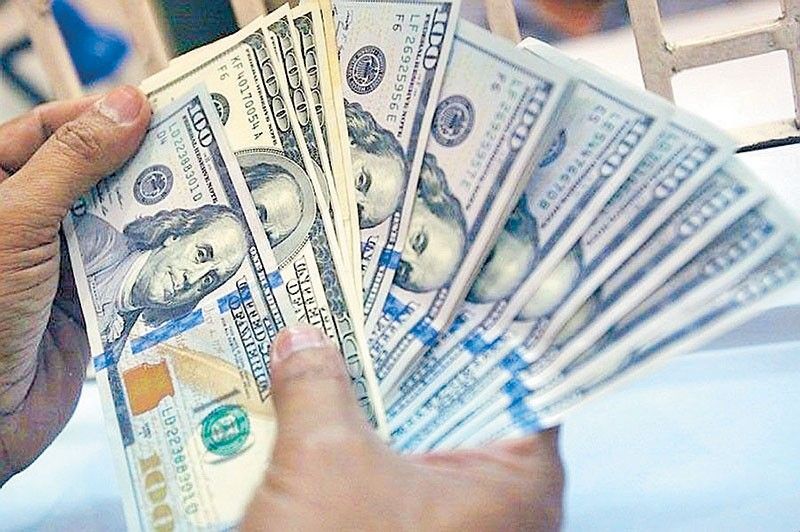Foreign debt rises to $128.7 billion in Q1

MANILA, Philippines — The country’s foreign debt hit another record high of $128.69 billion in the first quarter as private sector banks and the national government borrowed more from offshore creditors, the Bangko Sentral ng Pilipinas (BSP) said.
Based on BSP data, the latest foreign debt was 8.3 percent higher than the $118.81 billion incurred in the first quarter of last year and by 2.6 percent compared to the end-2023 level of $125.4 billion.
The increase in debt level was driven by the net availments of $2.5 billion largely by private sector banks, which raised $2.1 billion funds from offshore creditors for general corporate expenditures, refinancing of borrowings and liquidity purposes, the BSP said.
“Meanwhile, the $331 million net availments by public sector entities were mainly driven by the national government to fund its various projects/programs which include initiatives to enhance tax system efficiency and foster an enabling environment for digital technology adoption,” it said.
The central bank also said the rise in external debt was due to positive investor sentiment as investments in Philippine debt securities by non-residents rose by $1.2 billion.
Adjustments made in prior periods also increased the Philippines’ debt level by $551 million in the first quarter.
Meanwhile, the negative $927 million foreign exchange (FX) revaluation of borrowings denominated in other currencies amid the appreciation of the US dollar recently partially tempered the rise in the debt stock.
The BSP traced the year-on-year increase in the country’s debt stock to the net availments of $8.9 billion, of which $5.4 billion pertain to borrowings from private sector entities, mainly banks.
“The net acquisition of Philippine debt securities by non-residents of $1.5 billion and prior years’ adjustments of $1 billion further contributed to the year-on-year increase,” the central bank said.
But the negative $1.6 billion FX revaluation of borrowings denominated in other currencies partially tempered the year on year rise in the debt stock.
Despite the increase in the debt stock, the BSP noted that the country’s external debt ratio – expressed as a percentage of gross domestic product – remains at prudent levels, recording at 29.0 percent in the first quarter.
This was a tad higher than the 28.7 percent seen in the last quarter of 2023.
The maturity profile of the country’s external debt remained predominantly medium and long-term in nature, with original maturities longer than one year with share to total at 86.7 percent, while short-term accounts with maturities of up to one year comprised the 13.3 percent balance.
Public sector external debt inched up by 1.4 percent to $78.9 billion in the first quarter from the previous quarter’s $77.8 billion, resulting in a lower share of 61.3 percent from 62.1 percent.
About $72.3 billion or 91.6 percent of public sector obligations were national government borrowings, while the remaining $6.6 billion pertained to loans of government-owned and controlled corporations, government financial institutions and the BSP.
During the quarter, private sector debt slightly rose to $49.8 billion, with share to total likewise increasing to 38.7 percent from 37.9 percent.
Major creditor countries include Japan with $15.2 billion followed by the United Kingdom with $4.6 billion and the Netherlands with $3.9 billion.
Borrowings from multilateral lending institutions and bilateral creditors emerged as the largest share of 39.4 percent, followed by loans in the form of bonds or notes (32.8 percent) and obligations to foreign banks and other financial institutions (22.1 percent).
The remaining 5.6 percent came from other creditors such as suppliers and exporters.
In terms of currency mix, the country’s debt stock remained largely denominated in US dollar (76 percent) followed by Japanese yen (8.6 percent).
The national government borrows heavily from foreign and domestic creditors to finance the country’s budget deficit as it spends more than what it actually earns.
- Latest
- Trending






























